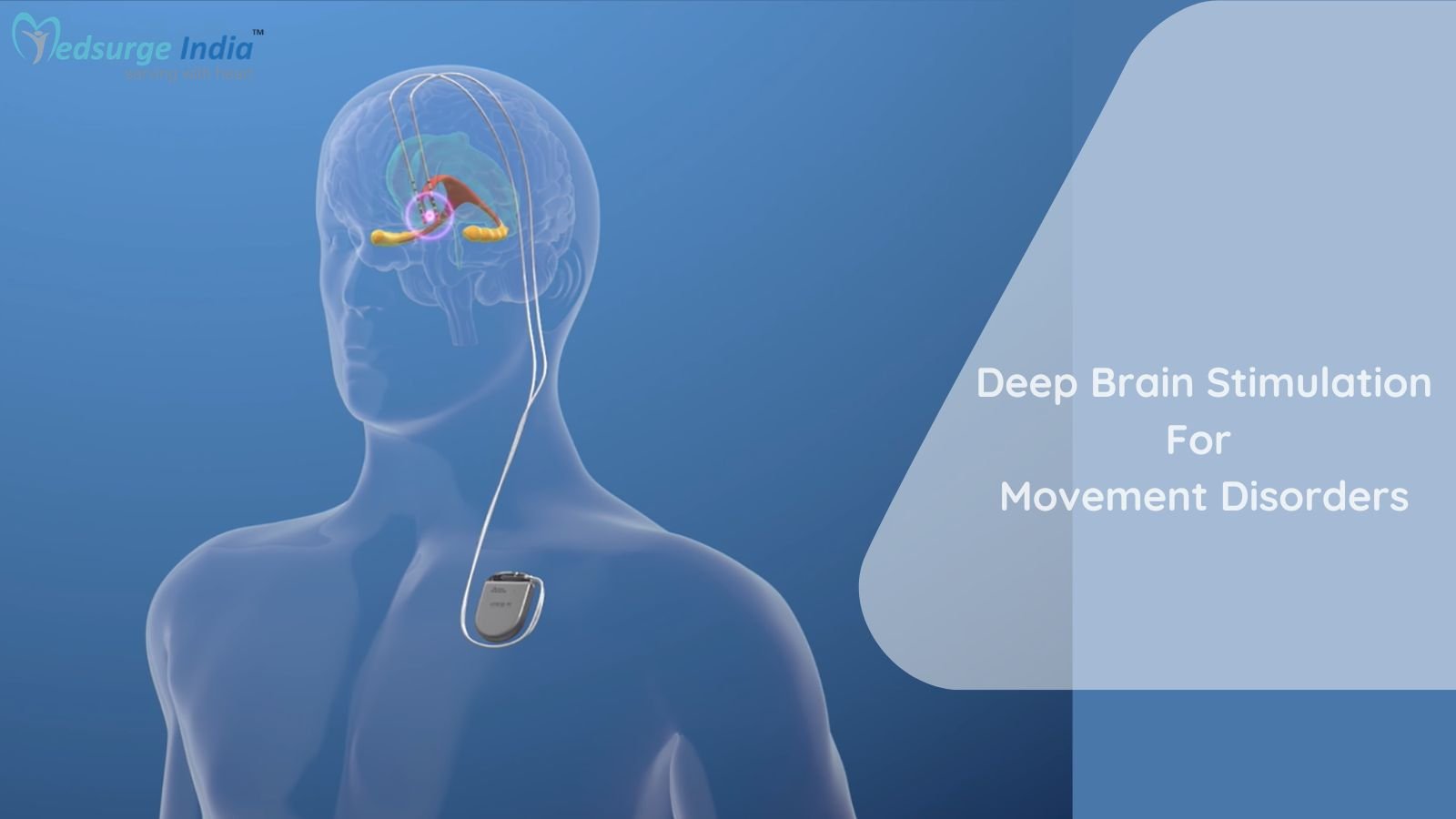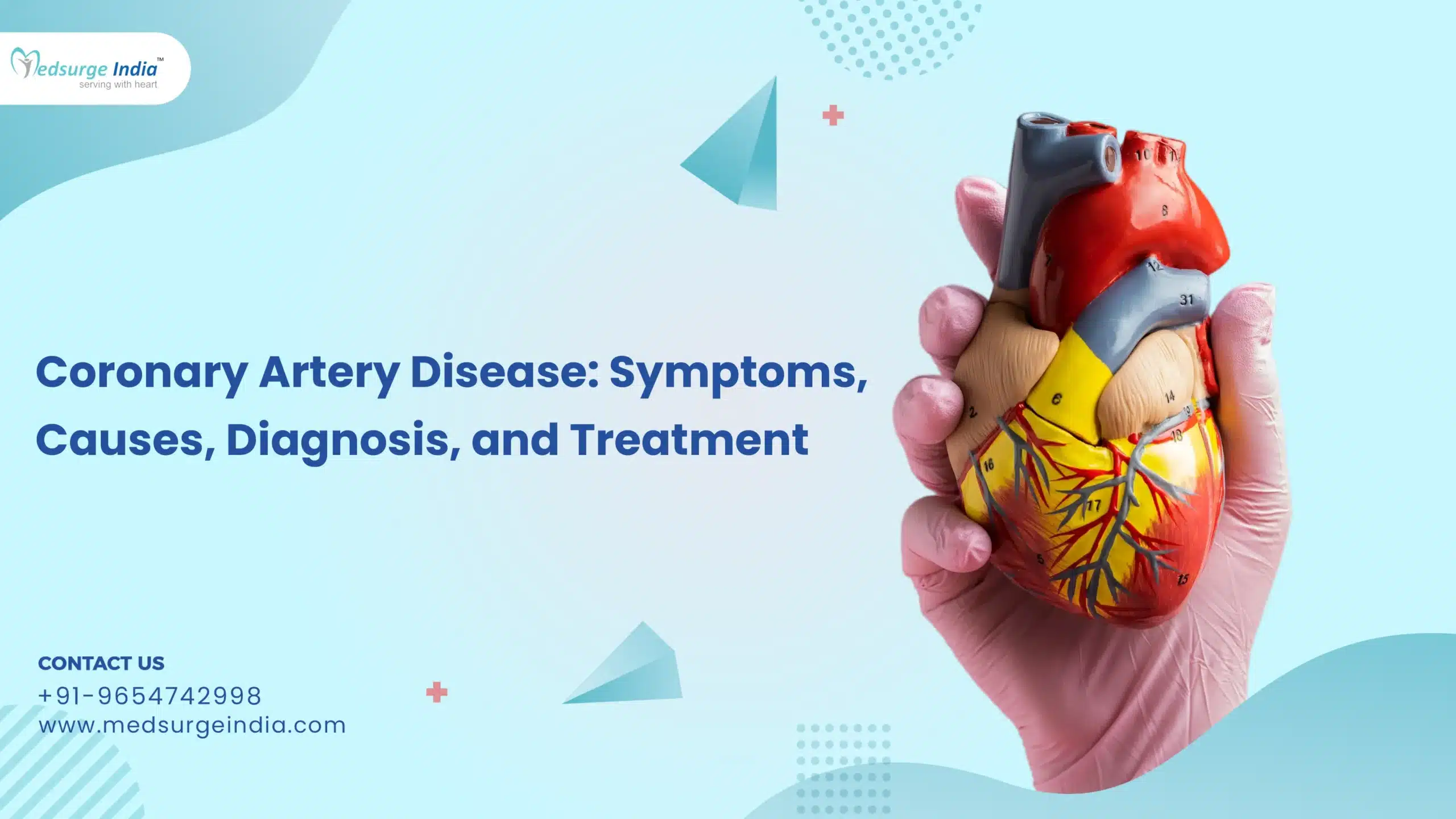
Deep Brain Stimulation For Movement Disorders
Deep brain stimulation (DBS) is used to treat neurological diseases such as dystonia, epilepsy, essential tremor, and Parkinson’s disease. DBS applies electrical stimulation to specific areas of the brain that control movement, thereby blocking the abnormal nerve signals that cause symptoms. This stimulation is provided by an implantable pulse generator (IPG), a surgically implanted, battery-powered medical device the size of a stopwatch that is comparable to a heart pacemaker.
The deep brain stimulation system is made up of three parts:
- The lead,
- Extension
- IPG
The lead, also known as an electrode and made of a thin, insulated wire, is inserted into the brain via a tiny incision in the skull. The electrode’s tip is placed in a specific region of the brain depending on the disease. The extension, which is an insulated wire inserted under the skin of the head, neck, and shoulder, connects the lead to the implantable pulse generator. The IPG (also known as the “battery pack”) is typically implanted under the skin near the collarbone. It is sometimes placed beneath the skin over the abdomen or lower in the body.
After the system is installed and the patient has had time to recover from surgery, the device is configured to a set of parameters that are most effective for each individual over multiple appointments with a neurologist. As part of the therapy, electrical pulses are sent from the IPG through the lead and extension wire and into the brain. These pulses change the electrical activity pattern in the brain at the targeted region to alleviate motor symptoms. Deep Brain Stimulation typically costs around USD 24000.
How does Deep Brain Stimulation Work?
Electrodes are implanted in various brain areas during deep brain stimulation (DBS). These electrodes generate electrical impulses, which regulate abnormal impulses. Specific brain cells and substances may also be affected by electrical impulses.
A pacemaker-like device beneath the skin in your upper chest regulates the level of stimulation during deep brain stimulation. The electrodes in your brain are connected to this device by a wire that runs beneath your skin.
Deep brain stimulation, for example, is frequently used to treat these conditions:
- Parkinson’s condition
- Essential tremor
- Dystonia
- Epilepsy
- Disorder of compulsive behavior
Additionally, deep brain stimulation is being researched as a possible treatment for:
- Tourette disorder
- Chorea and Huntington’s disease
- Chronic pain
- Cluster headache
By hamstringing the aberrant patterns of brain activity that develop in these conditions, DBS can effectively treat symptoms without providing a solution for movement disorders. DBS is frequently referred to as a “pacemaker” for the brain due to the continuous electrical pulses that are supplied at settings that are thought to restore normal brain rhythms. The precise mechanisms underlying this neuromodulation remain unknown.
How are Movement Disorders Treated with DBS?
Deep Brain Stimulation for Parkinson’s Disease – The most typical crippling motor symptoms of Parkinson’s disease (PD), such as rigidity, delayed movement, stiffness, tremor, and difficulty walking, are treated by DBS. It is only used for people whose symptoms are too severe to be well controlled by medicine. However, DBS is only beneficial for those who have some improvement after taking Parkinson’s medication. Numerous disorders that look like PD but are not responsive to medication or DBS exist.
Deep Brain Stimulation for Epilepsy – The frequency of seizures in people with focal epilepsy (seizures that start in just one area of the brain) may decrease over time with brain stimulation. It is used alongside anti-epileptic medications and is not a stand-alone treatment.
Adults with focal epilepsy are eligible to get deep brain stimulation as an additional treatment. When electrical activity in the brain resembles a seizure, another type of treatment called neurostimulation employs a sensor implanted in the skull and tiny wires to deliver brief stimulation pulses to the brain.
Essential Tremor Deep Brain Stimulation – DBS that targets the thalamus can lessen the essential tremor-related involuntary head, arm, and hand movement. DBS therapy benefits patients with essential tremors significantly, frequently reducing tremors by 80% or more. Deep brain stimulation effectively reduces hand tremors while also improving tremor in other areas of the body such as the head, voice, and legs. Patients with essential (familial) tremors who have not improved after trying at least one or two medications and whose quality of life is negatively impacted by their tremors are likely candidates for DBS. Patients with tremors caused by a stroke, traumatic brain injury, or multiple sclerosis may still be surgical candidates if expectations are reasonable.
Deep Brain Stimulation for Dystonia – DBS may help people with dystonia reduce uncontrollable muscle contractions, which are a symptom of the condition and contribute to symptoms such as abnormal posture, habitual motions, and twisting. DBS has been shown to reduce the severity of potential handicap as well as the severity of dystonia-related symptoms. DBS may be a good option for those who have had little to no relief from botulinum toxin injections because people with dystonia may respond better to it than medicine (often the most effective treatment for some dystonia). Although both groups are expected to improve, DBS may alleviate symptoms of dystonia that migrates from one part of the body to another faster than dystonia that is fixed in one body region.
Meige Syndrome – This syndrome, also known as oral-facial dystonia, combines blepharospasm and oromandibular dystonia, which are two distinct types of dystonia. Movement disorder specialists work closely with the Cranial Nerve Disorders Program to identify Meige Syndrome patients who may benefit from DBS.
How is the Procedure Carried Out?
The procedure of deep brain stimulation is serious and might be dangerous. Even if deep brain stimulation might be an option for you, you and your doctors must carefully consider the dangers and potential advantages of the treatment.
Before the procedure – You’ll probably require medical evaluations prior to surgery to confirm that deep brain stimulation is a safe and suitable alternative for you. In addition, you could require MRIs or other brain imaging tests before the operation. These investigations aid in mapping the regions of your brain where electrodes will be inserted.
During the procedure – Deep brain stimulation electrode placement and equipment location The general process of deep brain stimulation surgery are as follows:
Brain surgery – Your care team will fit you with a customized head frame to keep your head steady during the brain surgery portion of the process (stereotactic head frame). The experts will next map your brain using neuroimaging (brain MRI or CT) to determine where the electrodes should be placed.
The electrodes will often be inserted while you are awake and conscious. In order to fully test the effects of stimulation, this is done. If you’re awake during surgery, your scalp will be given a local anesthetic, but since your brain lacks pain receptors, you won’t require an anesthetic there. In some circumstances, general anesthesia can be used during surgery to make you unconscious. A small wire lead with several contacts (electrodes) at the tips is implanted by your surgeon into a particular region of your brain. Or both sides of the brain are implanted with a lead (for a total of two leads). A pulse generator (neurostimulator) implanted around your collarbone is linked by a wire beneath your skin.
The surgeon and neurologist closely monitor your brain during the operation to help ensure proper electrode placement.
Chest wall surgery: During the second stage of surgery, the pulse generator, which houses the device’s batteries, is implanted beneath your skin in your chest, close to your collarbone. General anesthesia is used to perform this treatment. Wires from the brain electrodes are routed under your skin to the battery-powered pulse generator.
The generator will send constant electrical pulses to your brain. The generator is under your control, and you can start or stop it with a specific remote control.
After Surgery
A few weeks after surgery, the pulse generator in your chest is activated in your doctor’s office. The doctor can easily configure your pulse generator from outside your body using a sophisticated remote control. Because it is tailored to your situation, it may take up to four to six months to find the right level of stimulation. Depending on your condition, stimulation may be continuous throughout the day, or your doctor may advise you to turn off your pulse generator at night and turn it back on in the morning. You can turn stimulation on and off with a one-of-a-kind remote control that you will take home. Your doctor may configure the pulse generator so that you can make minor adjustments at home.
The battery life of your generator varies depending on usage and settings. When the battery needs to be replaced, your surgeon will replace the generator during an outpatient procedure.
Bottom Line
Although deep brain stimulation will not cure your disease, it may help with symptoms. If deep brain stimulation works, your problems will improve significantly, but they will not disappear completely. Medication may still be necessary for some conditions. Deep brain stimulation does not work for everyone. Deep brain stimulation’s effectiveness is determined by a number of factors. It is critical to discuss with your doctor what kind of improvement to expect for your disease prior to surgery.
Reference
- https://www.ninds.nih.gov/deep-brain-stimulation-movement-disorders
- https://www.neurosurgery.pitt.edu/centers/epilepsy/dbs-movement-disorders
- https://movementdisorders.onlinelibrary.wiley.com/doi/abs/10.1002/mds.27860












